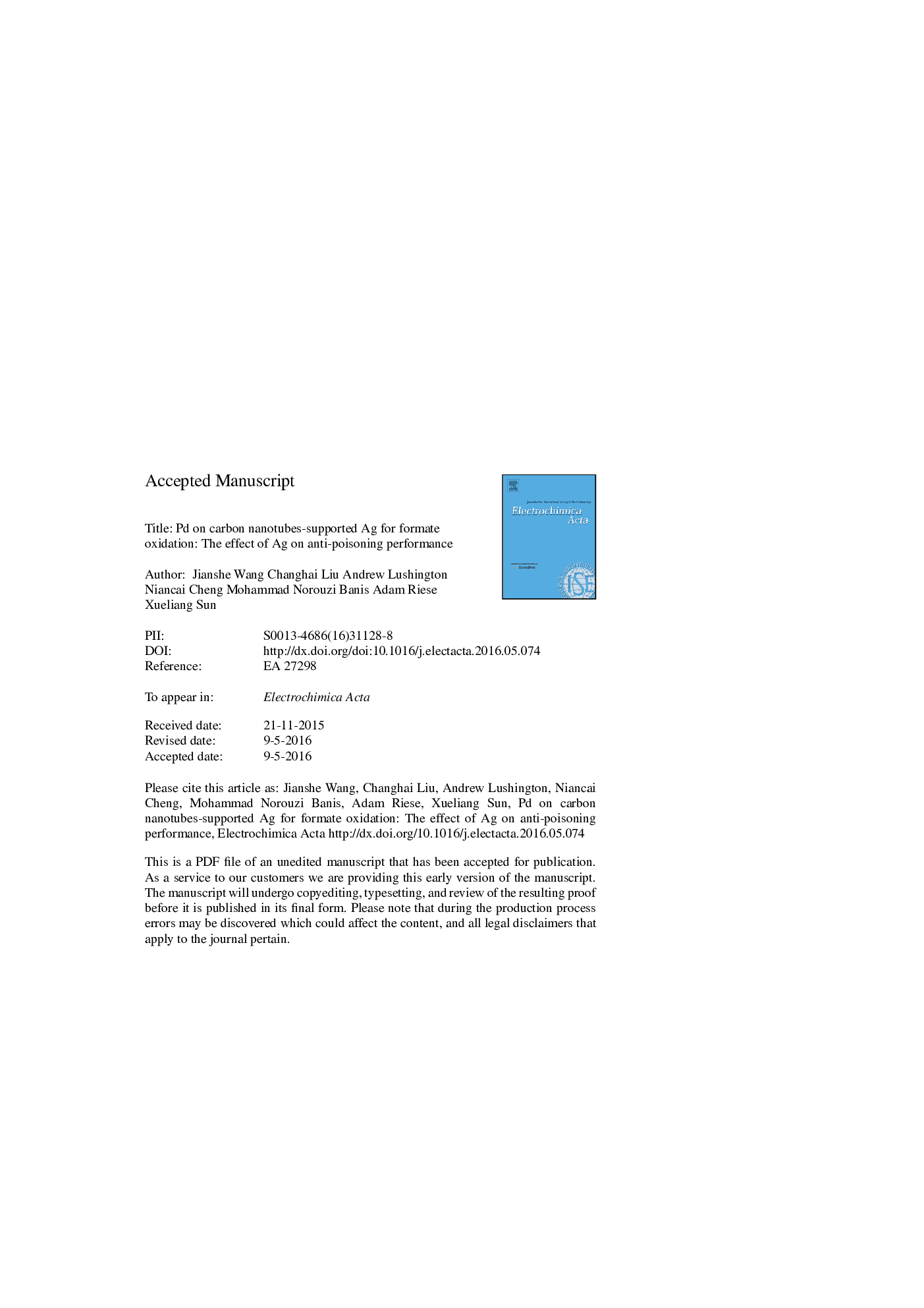| Article ID | Journal | Published Year | Pages | File Type |
|---|---|---|---|---|
| 6606701 | Electrochimica Acta | 2016 | 30 Pages |
Abstract
For improving the utilization and anti-poisoning performance of Pd catalysts for formate oxidation, atomic layer deposition (ALD) method was used to deposit Pd on carbon nanotubes (CNTs) and CNTs-supported Ag (Ag/CNTs). The structures of the as-prepared Pd/CNTs and Pd-on-Ag/CNTs catalysts were characterized using X-ray diffraction (XRD) and high resolution transmission electron microscopy (HRTEM). Electrochemical characterization and high-angle annular dark-field scanning TEM (HADDF-STEM) confirmed the Pd-on-Ag structure. Pd utilization, activity, and anti-poisoning performance for Pd/CNTs and Pd-on-Ag/CNTs catalysts were compared, indicating that the overall performances of the Pd-on-Ag catalysts are superior to those of Pd on CNTs without Ag. Particularly, the mass specific chronoamperometric current (ICA) of the Pd-on-Ag/CNTs (171.8Â mAÂ mgPdâ1) is two times greater compared to that of Pd/CNTs (70.0Â mAÂ mgPdâ1). X-ray photoelectron spectroscopy (XPS) was used to explain the improved anti-poisoning performance from the aspect of electronic Pd-Ag interaction. The results in this paper demonstrated the need for rationally engineered supports for improving the anti-poisoning performance of Pd-based anode catalysts.
Related Topics
Physical Sciences and Engineering
Chemical Engineering
Chemical Engineering (General)
Authors
Jianshe Wang, Changhai Liu, Andrew Lushington, Niancai Cheng, Mohammad Norouzi Banis, Adam Riese, Xueliang Sun,
